
The Real Academia de Bellas Artes de San Carlos de Valencia (Spanish for Saint Charles Royal Academy of Fine Arts of Valencia) has been a Spanish Art school in Valencia since 1768.

The Real Academia de Bellas Artes de San Carlos de Valencia (Spanish for Saint Charles Royal Academy of Fine Arts of Valencia) has been a Spanish Art school in Valencia since 1768.
The institution is deemed to be the follow-on institution of the Academia de Bellas Artes de Santa Bárbara, which was closed in 1759.
The institution was founded under the name Real Academia de las Tres Nobles Artes de San Carlos (Royal Academy of the three Noble Arts of Saint Charles) by decret of Charles III from February 14, 1768, according to the Real Academia de Bellas Artes de San Fernando in Madrid. The so-called "three noble arts" were painting, sculpture and architecture. Until 1910 the academic training was rather practical, before the course offer was increased by essential theoretic and practical knowledge. By decret from July 24, 1913, the museum for painting and sculpture was subordinated to the academy. [1]
The current president is Román de la Calle de la Calle.

Pompeo Girolamo Batoni was an Italian painter who displayed a solid technical knowledge in his portrait work and in his numerous allegorical and mythological pictures. The high number of foreign visitors travelling throughout Italy and reaching Rome during their "Grand Tour" led the artist to specialize in portraits.

Alonso Cano Almansa or Alonzo Cano was a Spanish painter, architect, and sculptor born in Granada.

Vicente López Portaña, OIC was a Spanish painter, considered one of the best portrait painters of his time.
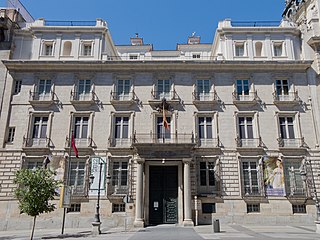
The Real Academia de Bellas Artes de San Fernando, located on the Calle de Alcalá in the heart of Madrid, currently functions as a museum and gallery. A public law corporation, it is integrated together with other Spanish royal academies in the Instituto de España.

Cristóbal Valero was a Spanish painter and presbyter.
The Academia de Bellas Artes de Santa Bárbara was an art school located in Valencia, Spain, founded in 1753 by decree of King Ferdinand VI of Spain
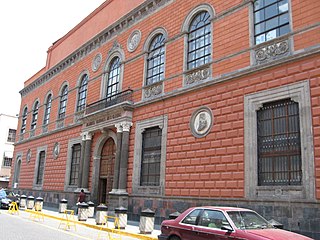
The Academy of San Carlos is located at 22 Academia Street in just northeast of the main plaza of Mexico City. It was the first major art academy and the first art museum in the Americas. It was founded in 1781 as the School of Engraving and moved to the Academia Street location about 10 years later. It emphasized classical European training until the early 20th century, when it shifted to a more modern perspective. At this time, it also integrated with the National Autonomous University of Mexico, eventually becoming the Faculty of Arts and Design, which is based in Xochimilco. Currently, only graduate courses of the modern school are given in the original academy building.

Cecilio Plá y Gallardo was a Spanish painter and illustrator.
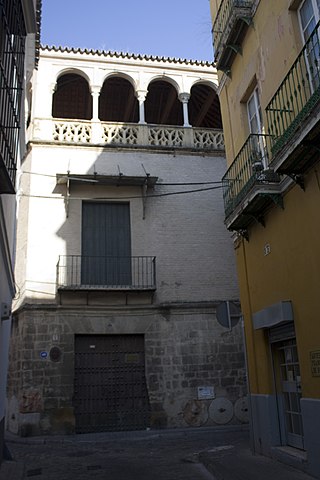
The Real Academia de Bellas Artes de Santa Isabel de Hungría is located in the Casa-Palacio de los Pinelo in central Seville, Spain. It is divided into six sections: Architecture, Sculpture, Painting, Music, Archaeology, Decorative Arts and Performing and Audiovisual Arts.

Ricardo J. Vicent Museros was a Spanish printer and publisher. After studying in Germany he returned to Valencia with new methods of work, advertising and graphic marketing. He founded the "Museo Nacional de la Imprenta y la Obra Gráfica" in El Puig de Santa María. He promoted the twinning of the cities of Valencia and Mainz (Germany). In 1992, the International Gutenberg Society granted him the "Gutenberg Prize" and in 2003 he received the "Cross of Civil Merit" from the German government for his work in favour of cultural relations between Spain and Germany.
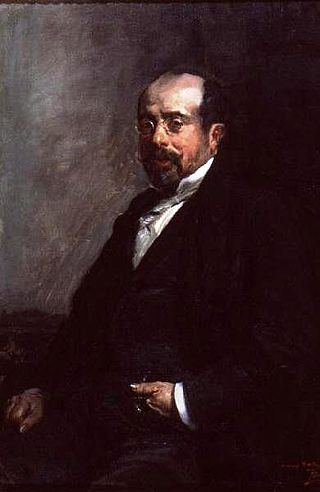
Antonio Muñoz Degrain was a Spanish painter who began in the Eclectic style, later in his career he moved towards Impressionism. He is best known for his landscapes and scenes inspired by works of literature.
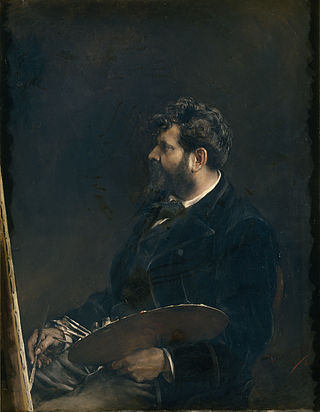
Francisco José Domingo y Marqués was a Spanish painter in the Eclectic style.

María Isidra de Guzmán y de la Cerda was a Spanish noble and scholar. She is regarded to be the first woman to receive a Doctor of Philosophy in Spain.
Antonio Peris Carbonell is a painter and sculptor born in Valencia, Spain, in 1957.
Felipe Maria Garin Ortiz de Taranco was a Spanish writer, researcher and Academician of art.

José María Avrial y Flores was a Spanish painter, illustrator and scenographer.

Valencian Art Nouveau, is the historiographic denomination given to an art and literature movement associated with the Art Nouveau in the Valencian Community, in Spain.
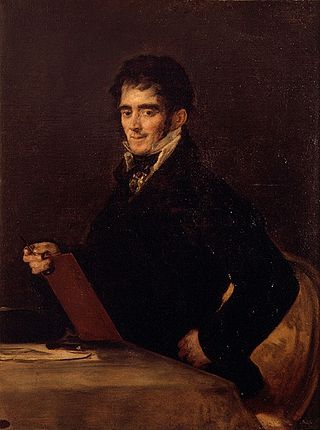
Rafael Esteve Vilella was a Spanish engraver in the Romantic style.

Ignacio Vergara Gimeno was a Spanish Baroque sculptor.
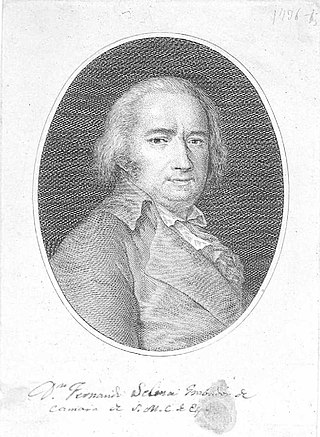
Fernando Selma was a Spanish engraver and illustrator.